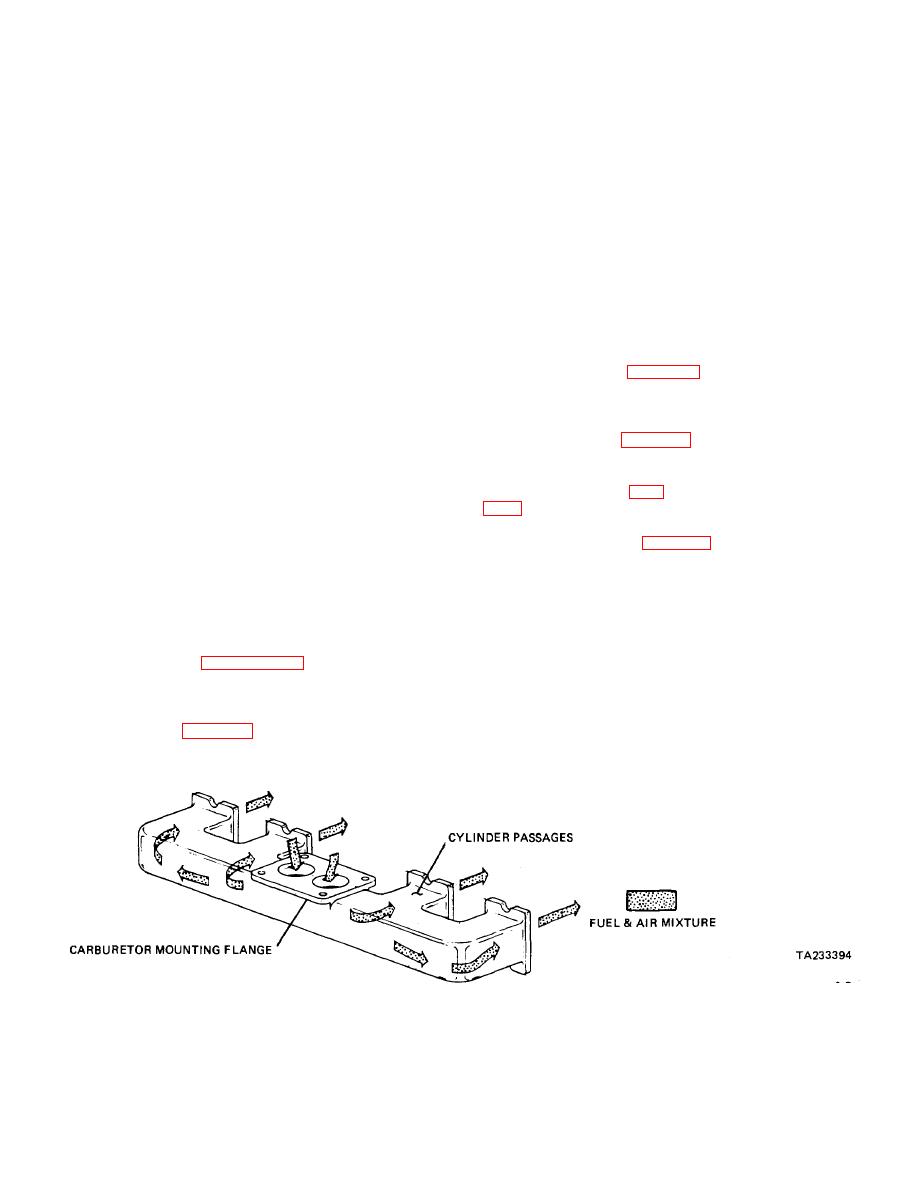
| Tweet |

Custom Search
|
|

|
||
 TM 9-8000
atmospheric pressure. This is important for the following
(1) Deliver the mixture to the cylinders in equal
reasons:
quantities and proportions. This is important for smooth
engine performance. The lengths of the passages
(1) Air must be allowed to enter the tank as the
should be as near to equal as possible to distribute the
fuel is pumped out. Without ventilation of the tank, the
mixture equally.
pressure in the tank would drop to the point where the
fuel pump would not be able to draw any more fuel from
(2) Help to keep the vaporized mixture from
it. In some cases, the higher pressure around the
condensing before it reaches the combustion chamber.
outside of the tank could cause it to collapse.
Because the ideal mixture should be vaporized
completely as it enters the combustion chamber, this is
(2) Temperature changes cause the fuel in the
very important. To reduce the condensing of the mixture,
tank to expand and contract. Absence of a ventilation
the manifold passages should be designed with smooth
system could cause excessive or insufficient fuel line
walls and a minimum of bends that collect fuel. Smooth
pressure.
flowing intake manifold passages also increase
volumetric efficiency (para 2-23).
b. Configurations. The most common methods of
(3) Aid in the vaporization of the mixture. To do
venting a fuel tank are:
this, the intake manifold should provide a controlled
system of heating (para 7-3). This system of heating
(1)
By venting the fuel
tank cap to the
must heat the mixture enough to aid in vaporization
atmosphere. This method was the
most common on
without heating to the point of significantly reducing
earlier passenger cars and trucks.
It still is used on
volumetric efficiency (para
vehicles that are not subject to
emission control
regulations or used for fording.
b. Ram Induction (Fig. 4-15). Intake manifolds can
(2) By providing a line to the fuel tank that vents
be designed to provide optimum performance for a given
the fuel tank at a point that is high enough to prevent
engine speed range by varying the length of the
water from entering during fording operations.
passages. The inertia of the moving intake mixture will
cause it to bounce back and forth in the manifold
(3) Vehicles that are subject to emission control
passage from the end of one intake stroke to the
regulations have fuel tank ventilation systems that work
beginning of the next intake stroke. If the passage is the
in conjunction with the evaporation control system. This
proper length so that the next intake stroke is just
system is discussed in paragraph 7-5.
beginning as the mixture is rebounding, the inertia of the
rnixture will cause it to ram itself into the cylinder. This
45. Intake Manifold.
will increase the volumetric efficiency of the engine In the
designated speed range. It should be noted that the ram
a. Description (Fig. 4-14). The intake mani-
manifold
fold should:
Figure 4-14. Typical Intake Manifold.
4-9
|
||
 |
||